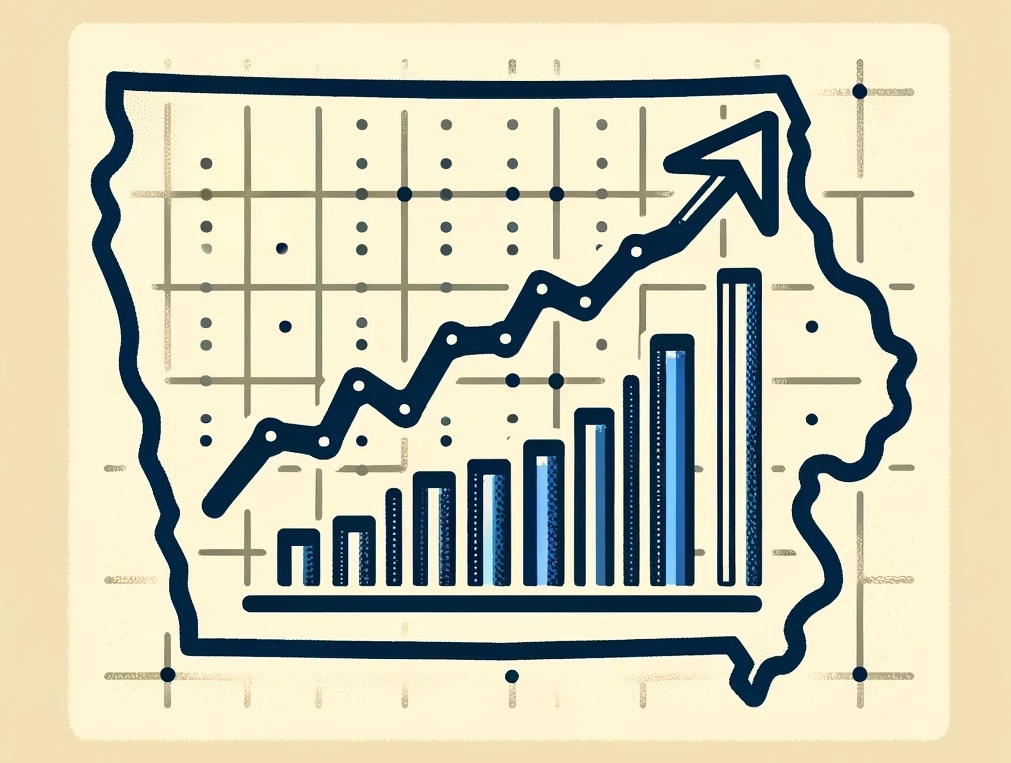Jason Fontana is a doctoral candidate in Sociology and Social Policy at Princeton University. Jennifer Jennings is Professor of Sociology and Public Affairs at Princeton University’s School of Public and International Affairs, and the Director of the Education Research Section. Fontana and Jennings are conducting a multi-year research project on the impacts of Education Savings Accounts.
Frequently asked questions about “The Effect of Taxpayer-Funded Education Savings Accounts on Private School Tuition: Evidence from Iowa,” a working paper by Jason Fontana and Jennifer Jennings, published at Brown University’s Annenberg Institute in April 2024.
1) What questions does this study answer?
This study asks if Education Savings Accounts (ESAs), which are taxpayer funds to help pay for private school, caused Iowa private schools to raise tuition prices in the 2023-24 school year.
2) How does this study answer those questions?
The study compares tuition prices in Iowa, where ESAs were available in 2023-24, to Nebraska, which will adopt ESAs starting in 2024-25. Since Iowa and Nebraska are similar in many ways, comparing them helps show the impact of ESAs. It also looks at how tuition changed in different grades to see if prices increased more when all students were eligible.
3) Where does the tuition data in this study come from?
The data comes from private school websites in Iowa and Nebraska. If tuition information wasn’t available online, the researchers contacted the schools directly. They also used the Wayback Machine to get historical tuition data.
4) What does this study find?
The study finds that after ESAs were introduced in Iowa, private schools raised their tuition:
- Kindergarten (all students eligible for ESAs): Tuition increased by 25 percent.
- Grades 1-12 (some students eligible for ESAs): Tuition increased by 16 percent.
- Pre-K (students not eligible for ESAs): No tuition increase.
5) Are these tuition increases due to inflation?
The tuition increases reported in the study account for inflation. The study compares Iowa to Nebraska, which has similar economic conditions but no ESA program in 2023-24. Also, inflation would affect all grades equally. However, the study found different increases based on ESA eligibility, suggesting inflation is not the cause.
[Editor’s note from Laura Belin: Asked about this study during a recent appearance on the Iowa PBS program “Iowa Press,” Iowa Senate President Amy Sinclair asserted, “I think those tuition increases would have occurred regardless of an education savings account scholarship when you have, over the course of the last three years, cumulative inflation of about 20 percent. Those costs impact non-public schools. I would suggest to you that regardless of the study, those tuition increases would have had to have occurred.”]
6) Are these tuition increases rebounding after COVID-19?
Both Iowa and Nebraska were affected by COVID-19. The study compares Iowa’s tuition increases to Nebraska’s, showing that the increases in Iowa are due to ESAs, not just a rebound from COVID-19.
[Editor’s note from Laura Belin: KCRG-TV asked April Bickford, principal of Summit Schools in Cedar Rapids, about the Princeton researchers’ findings. Summit increased tuition by $6,000 in December, but Bickford told KCRG the school’s “tuition hike wasn’t because of vouchers, but to reset tuition after decreasing it during the Pandemic.”]
7) Your research team couldn’t get tuition data for every school. How does this affect the results?
The study includes data from schools representing 62 percent of Iowa’s private school students. Schools raising tuition the most might be less likely to share their rates, so the results likely underestimate the actual increases.
8) Why is this study important?
This study helps policymakers understand how ESAs impact private school tuition. It shows that while ESAs aim to make private schools more accessible, they might actually raise tuition, potentially limiting access for some families.
Read the entire working paper by Fontana and Jennings here:


1 Comment
Public school allowable growth versus inflation
While Senator Sinclair is correct that inflation (calculated using CPI-U) has increased by 20 percent from January 2021 through April 2024, it is notable that the legislature’s increases in per pupil allowable growth for K-12 public schools are a much smaller percentage – increases of 2.4%, 2.5%, and 3% for school years 2021-2023 respectively. I guess inflation only impacts private schools in her world.
Randy Bauer Wed 29 May 9:29 AM